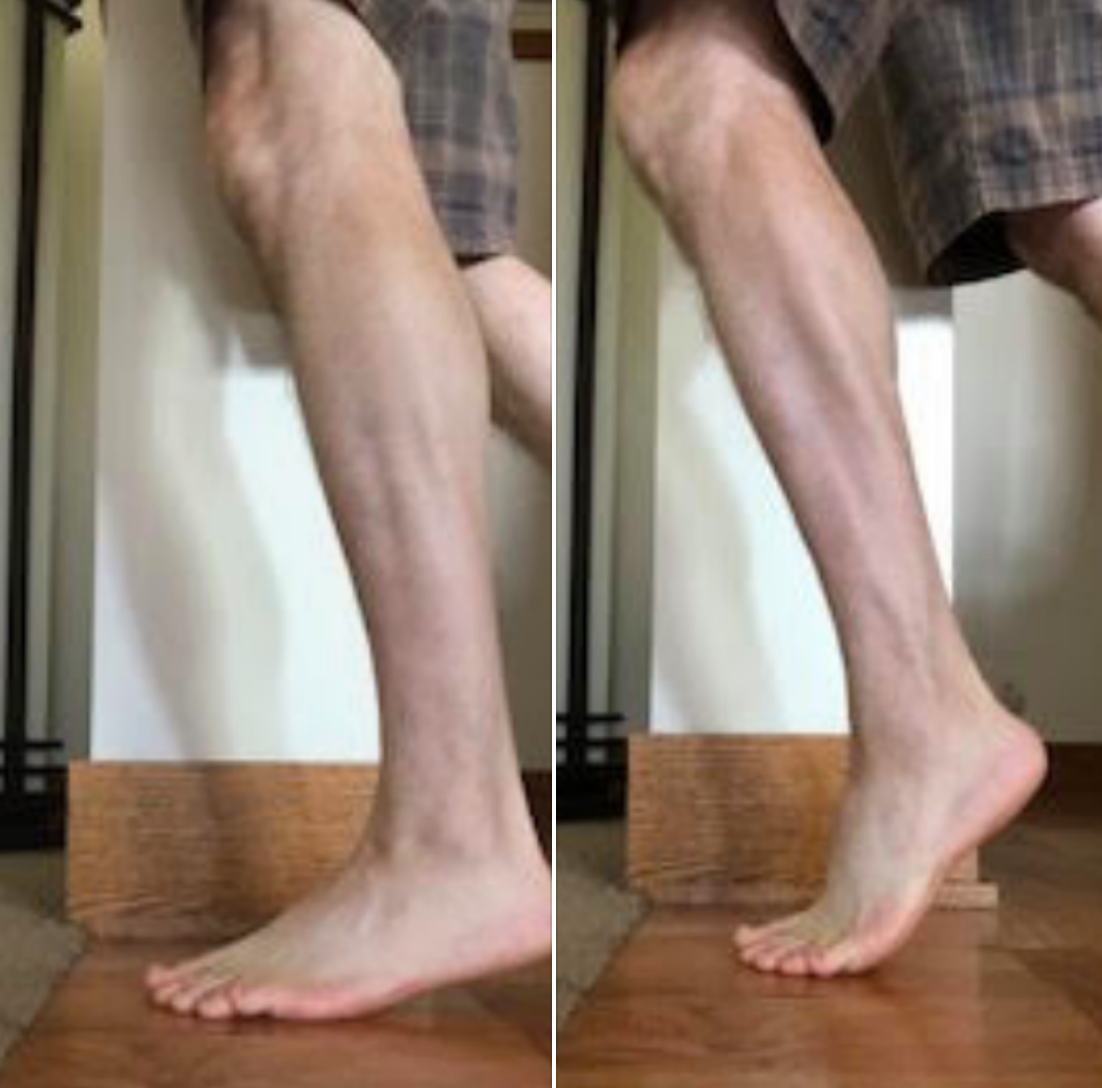Top end heel raises. The top end might matter.
/Thought experiment . . .
If top end posterior compartment (loosely, the calf complex) strength is lacking, then heel rise may not be optimized to transfer body mass forward sufficiently and effectively.
This lack of forward progression, fails to move the body mass sufficiently forward enough to reduce the external moment arms and optimize the internal moment arms to take maximal advantage of the calf complex (I am talking about moment arms between the grounded 1st MTP joint and ankle mortise & ankle mortise and achilles tendon).
These are rough thoughts today gang, letting you inside our heads and how we juggle multiple parameters when we are struggling to solve a client's problems.
In the lower heel rise photo, The body mass does not progress forward enough over the grounded first MTP joint at the big toe (during gait, the heel doesn’t just rise up, the axis of the ankle joint moves both up and forward).
In this case, the foot may not be fully rigid in a supinated position to benefit from joint closed-packed positions. Thus, the foot may be more pliable and one might suppose that if not adequately supinated, they are inadequately still too much relatively pronated. This might put more load into the tibialis posterior and other soft tissue mechanical loading scenarios that are less optimally suited to do this job. Over time, might this lead to pathology? Likely.
Thus, when running on a weaker posterior mechanism (often found unilaterally) the higher up posterior chains might be overburdened, the tendon loads and loading response of the achilles, tibialis posterior, and long flexors will be most likely altered, likely negatively, the naturally occurring foot locking mechanisms might be less optimal than desired, subtalar and forefoot loading might be premature (ie. sesamoid malpositioning for one, as a simple example), etc etc. Loading a foot(the mid and forefoot) into heel rise that is still somewhat pronated creates a different moment arm around the subtalar joint axis (that moves through the 1st metatarsal), than a foot that is more supinated.
Now, put these ideas into the 2 photos from yesterday where one might be loading the forefoot laterally or more medially, and now make the top end strength more in one of those scenarios. Is it any wonder why so many struggle with posteiror mechanism tendonopathies ? There are so many parameters to consider and examine. And, if not examined in great detail, the key lacking parameter can be missed.
Hence, just forcing calf strength loading is too simple a solution, there is a needle in that haystack that upset the client's apple cart, it is the job of the clinician to find it and remedy it.
Today, looking into the research and finding some interesting things that are spurring some thoughts.
Shawn Allen, one of the gait guys
















